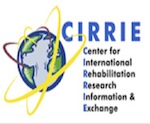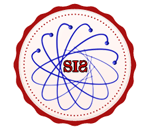


Google Scholar citation report
Citations : 5373
ASEAN Journal of Psychiatry received 5373 citations as per google scholar report
ASEAN Journal of Psychiatry peer review process verified at publons
| Journal Name | ASEAN Journal of Psychiatry (MyCite Report) | ||||
|---|---|---|---|---|---|
| Total Publications | 456 | ||||
| Total Citations | 5688 | ||||
| Total Non-self Citations | 12 | ||||
| Yearly Impact Factor | 0.93 | ||||
| 5-Year Impact Factor | 1.44 | ||||
| Immediacy Index | 0.1 | ||||
| Cited Half-life | 2.7 | ||||
| H-index | 30 | ||||
| Quartile |
|
- Anxiety Disorders
- Behavioural Science
- Biological Psychiatry
- Child and Adolescent Psychiatry
- Community Psychiatry
- Dementia
- Community Psychiatry
- Suicidal Behavior
- Social Psychiatry
- Psychiatry
- Psychiatry Diseases
- Psycho Trauma
- Posttraumatic Stress
- Psychiatric Symptoms
- Psychiatric Treatment
- Neurocognative Disorders (NCDs)
- Depression
- Mental Illness
- Neurological disorder
- Neurology
- Alzheimer's disease
- Parkinson's disease
Abstract
Role of Calcium calmodulin-dependent protein kinase II (CaMKII) in synapse formation and synaptic Transmission between Lymnaea neurons.
Author(s): Atiq Hassan, Nazim Nasir, Mohammad Suhail khan, Izhar HusainNetworks of synaptically connected neurons underlie all brain functions. Various cell-cell signaling and extrinsic molecules influence synapse assembly at the synaptic site. Calcium ions play a significant role in signal transduction pathways that control various neuronal functions. Multifunctional Ca2+/calmodulin-dependent protein kinase II (CaMK II) is an important mediator of calcium signaling in neurons, it plays an essential role in controlling synaptic strength and plasticity, and it is highly expressed in the cytosol of developing neurons, especially in presynaptic neurons. However, the precise role of CaMKII in synapse formation and synaptic transmission has not yet been determined. We hypothesized that CaMKII activity could be necessary for synapse formation and synaptic transmission. To test whether CaMKII activity is required for the synapse formation and synaptic transmission, the identified neurons visceral dorsal 4 (VD4 – presynaptic) and its postsynaptic partner left pedal dorsal 1 (LPeD1) from the freshwater snail Lymnaea stagnalis were paired in soma-soma configuration in cell culture. The soma-soma paired cells recapitulated their excitatory connections in vitro. To test the possible role of CaMKII in synapse formation and synaptic transmission, the in vitro paired neurons were exposed to a CaMKII-specific inhibitor KN-93 and its inactive analog KN-92. The incidence of synapse formation and efficacy of synaptic transmission was tested electrophysiologically. In this study, we have demonstrated that paired neurons cultured in the presence of CaMKII inhibitor KN-93 do not affect the incidence of synapse formation; however, it reduces synaptic transmission. In contrast, paired neurons exposure to KN-92 did not affect the synapse formation and synaptic transmission at synapses between identified neurons. Taken together, CaMKII activity was not required for normal synapse formation; nevertheless, it plays an essential role in synaptic transmission between the soma-soma-paired Lymnaea neurons.


























